|
Training for hiking in the gym can be an effective, convenient, and efficient way of training to help you get fit and strong for the trail. This article explores some of the best strength and cardio exercises a hiker can do at the gym. Now admittedly, many hikers find the idea of training itself extremely odd. Let alone going to the gym! But, there can be no denying that investing some time into training (off the trail) can be incredibly beneficial for many hikers. Whether it is to help them get ready for a big trip, overcome an ache or pain, or simply make their regular hiking more comfortable, training can make a genuine difference for many hikers. And doing that training in the gym does have several benefits. The Benefits Of Training In The Gym For Hikers The Gym Avoids Bad Weather Not all of us are blessed with mild and comfortable weather all year around. Rain, cold, snow, heat, and everything in between can limit training (and hiking!) for many people. The gym avoids all of this and can allow training during any weather or season. The Gym Makes Heavier Training More Approachable There are numerous benefits to slightly heavier and more challenging strength training for hikers (and anyone who tells you otherwise might not quite know what they are talking about...). But one issue with this is it can often be a bit intimidating to approach this training at home or with limited equipment. The gym environment opens up many options to make this more approachable (such as various weight types, machines, professional guidance etc.). And can allow any hiker to experience the incredible benefits that heavier strength training can provide on the trail. The Gym Can Allow More Variety In Training No matter how good your home gym set-up may be, it is likely a gym will have MUCH more variety of equipment. And while changing equipment, every training session isn't necessary (or recommended!); having a few extra options can make long term training that much more enjoyable. The Gym Allows Separation From Distractions Training at home or outdoors can be full of distractions. Family, work, phones, pets and a dozen other things can often get in the way of a good workout. This is bad enough when you are feeling motivated. But when you are teetering on the edge of motivation, this is often enough to ruin a workout before it begins. Having the option to go to a separate location, apart from all of this, can make all the difference. Gym Training Can Be Much More Time-Efficient Quite often, training in the gym is MUCH more time-efficient than training at home. There is no need to set the equipment up, change weights settings, clear space or anything like that. You simply turn up, do your thing, and get out. Easy as that. ==== Does a hiker have to do all their training in the gym? No. In fact, we have gotten hikers fit, strong and resilient for some of the most challenging trails in the world without ever stepping in a gym! But, for those who prefer their training in the gym environment, this article will share some of our favourite exercises. Training For Hiking In The GymBelow are some exercises which we consider to be the 'best' exercises a hiker can do in the gym. This list is non-exhaustive, and exercise selection is very dependent on the individual. On top of this, to get the most out of these exercises, they should be incorporated into a structured workout. Below, we will break things up into:
The Best Bodyweight Exercises For HIkersBodyweight training is a great place for many hikers to start with their strength training. This type of training requires minimal equipment, doesn't need much training experience but, if done right, can do some fantastic things for almost every hikers strength and stability. Step Down The stepdown is the single best exercise for any hiker out there. It is very beneficial at improving ankle and knee stability. And it incredibly specific to helping you with downhill hiking. Start with a small step and, as you get stronger, slowly increase the height. When you can't go any higher, drop the height, add some weight (with a couple of dumbbells or a loaded pack) and start the process again. Single Leg Deadlift The single leg deadlift is a fantastic exercise to help develop hamstring and glute strength for a hiker. This is important for knee and back stability. On top of this, it can be beneficial at improving balance and ankle stability as well. Keep each rep slow and controlled. As it gets easier, you can load this up with dumbbells or a barbell. Lateral Slider Lunge The lateral slider lunge is a great exercise to help develop the adductors (i.e. groin) and develop glute stability. This is important as the adductors play a role in supporting the knees, and also are essential to helping you in slippery and uneven terrain. If your gym doesn't have a slider, you can use a towel on a hardwood floor. As this gets easier, you can load this up with a dumbbell held at your chest. The Best Barbell Exercises For HikersThe barbell is a great option for hikers who are looking to develop their strength for the trail as much as they can. If it necessary? No. Is it the place where beginners should start? Probably not. But, if you are looking to push and develop your strength training, the barbell will allow you to move heavier loads, and apply more force to your training. Barbell Step Up While many hikers are familiar with step-ups, the barbell allows the hiker to load this exercise up relatively heavy and really challenge their single leg quadricep strength. And this is probably one of the best exercises available to hikers to help them improve their uphill hiking. Use a small box (no higher than 3/4 up your shin). As you get stronger, add on more weight. Barbell Glute Bridge This is a fantastic exercise to help develop strength in the glutes for a hiker. This is particularly beneficial at helping support the knees and the back while hiking. As you get stronger with this exercise, you can either add more weight or add a bench under your shoulders and turn it into a 'hip thrust'. Front Squat The barbell front squat is a great exercise to develop quadricep strength for a hiker. Using a barbell at the front of the shoulders (and not the back) keeps the torso slightly more upright, adding extra emphasis into the quads, and reducing the likelihood of the torso tipping over (which can often make the lower back uncomfortable). To add extra challenge, add an extra second to the lowering portion of each rep, add some extra pause time at the bottom of each rep or add extra weight. The Best Dumbbell Gym Exercises For Hikers Dumbbells are a great option for hikers performing strength training. They are versatile, adaptable and they can be very effective for both beginners and advanced lifters alike. Eccentric Goblet Squat This exercise is a great option if you have been regularly doing bodyweight squats and need a new challenge. The slow lowering of each rep, helps develop 'eccentric quadricep strength' which is incredibly beneficial to prevent jelly legs while hiking downhill. Choose a box height which you can comfortable squat down to. Lower each repetition for 5 seconds (or more!). As you get stronger, use a heavier weight. Hack Squat The dumbbell hack squat is another great exercise to help develop quadricep strength for hikers. Having your heels elevated, will slightly change the angle of this movement (compared to a normal squat) which can replicate the demands of downhill hiking (and can also be MUCH more comfortable for hikers who might have tight ankles). Squat down as far as you are comfortable each repetition. As you get stronger, use heavier dumbbells. Dumbbell Calf Raise The calves play a critical role in hiking, and they are incredibly beneficial to strengthen for hikers. This exercise helps strengthen the upper part of the calves (the gastrocnemius). This can help support the feet and knees, and also reduce the calves 'burning' while hiking steep ascents. Keep each repetition slow and controlled. As you get stronger add extra weight. The Best Upper Body Gym Exercises For HikersSo far, we have just discussed lower body training. Which is obviously the most important thing for a hiker to work on! However, while it may not be the 'priority', that does not mean the upper body should be neglected. Improving upper body strength can be incredibly beneficial for making pack carrying easier, improving performance while using trekking poles and, helping support the wrists, elbows, shoulders and neck. Neutral Grip Dumbbell Chest Press The dumbbell chest press is a great exercise to develop strength and stability through the chest, shoulders and arms. Using a neutral grip can often be much more comfortable for those who get sore shoulders. On top of this, the angle of a neutral grip can closely replicate the angles of your wrists, elbows and shoulders while using trekking poles (which can be beneficial to help you while using those). Keep each rep slow and controlled. As you get stronger, use heavier weights. Seated Cable Row During hikers training, the upper back can often get neglected. But developing this area is incredibly important for helping support you while wearing a back and helping keep your posture more comfortable during long days on the trail. The cable seated row is a great option to develop this. At the top of each rep, have a slight pause. And keep the lowering portion of each rep controlled. As you get stronger, use a heavier weight. Half Kneeling Overhead Press This exercise is an excellent option for a hiker to develop their shoulder strength, which can be very beneficial while carrying heavier packs, This version of the typical overhead press can be slightly more comfortable on the shoulders for many hikers. Plus, the half-kneeling stance gives a solid amount of support while also challenging some torso stability (to prevent you from tipping over sideways). As you get stronger, use a heavier weight or progress to a seated or standing version. The Best Gym Machine Exercise For HikersGym machines are an excellent option for hikers looking to target, load up and develop very specific areas of their body. The benefit of using machines (as opposed to free weights) is you don't typically have to worry about balance, stability, holding weights or anything like that. But instead, you can just focus on one thing. Moving the weight. This allows you to load up certain areas quite a bit more than you may be able to with free weight (this is especially so for beginner and intermediate lifters). Single Legged Leg Press The leg press is a great machine to develop quadriceps strength. And to make this even better, a great option is doing this as a single-legged version. This adds in some extra contribution from the glutes, and the single-legged nature of this gives a bit more relevance to hiking. This exercise is particularly beneficial for hikers looking to develop knee stability but who with discomfort while doing more challenging free weights. Single Leg Calf Raises On Leg Press Strengthening the calves is critical for any hiker who wants to perform on the trail. In particular, they play an important role in supporting the feet and knees while, as well as they do a lot of work when climbing steep ascents. While many hikers may have good calf endurance, quite often, calf strength is the limiting factor. This exercise allows a hiker to load up the upper part of the calves (the gastrocnemius) quite heavily in a safe and controlled way. Keep each rep slow (both up and down). As you get stronger, increase the weight. Seated Calf Raise Machine While the exercise above works the upper part of the calves, the seated calf raise will work the lower part of the calves (the soleus), which is just as crucial for a hiker. However, when using free weights of body weight, this type of calf training can be a bit tricky for many people. So this machine allows a hiker to load this area up very effectively. For each repetition, add a slight pause at the top. As you get stronger, add extra weight. The Best TRX Exercises For HikersThe TRX (or any suspension equipment) can be a handy piece of equipment to help a hiker with their training. The added support of this equipment can make several challenging (but very beneficial) bodyweight exercises more approachable for many hikers. On top of this, the 'free range of motion' that this equipment offers can often unlock different angles and movements during exercises, which can be more comfortable for many people. TRX Skater Squat The skater squat is a fantastic exercise to help develop single-leg quadricep and glute strength, which is incredibly beneficial to help hikers with descents, steep climbs and However, a regular bodyweight skater squat is a very advanced exercise that many hikers struggle with. However, holding onto a TRX makes this exercise much more achievable. Pistol Squat The pistol squat has very similar benefits to the skater squat for hikers. But again, a traditional pistol squat can be a bit too difficult for many hikers. Holding onto the TRX makes this much more doable. Keep the lowering portion of each repetition slow. You can either add weight (in a weights vest or pack) or try an unsupported version as you get stronger. TRX Row The TRX row is a great option to help develop upper back strength for hikers, particularly beneficial for helping heavier pack carrying or keeping your posture more comfortable on long days on the trail. As you get stronger, bring your feet closer to the anchor point, or add a rise under your heels. The Best Gym Cardio Exercises For HikersWhile it is perfectly possible to develop your cardiovascular hiking fitness outside (on the trail or around your local neighbourhood), there can be no denying some cardio machines in the gym can be a convenient and effective option for many hikers. The Sled The sled is a fantastic piece of equipment for any hiker to use. It is safe, simple and can be incredibly effective at developing many different types of fitness for a hiker. A few options include:
*You can learn more about sled training for hikers in this podcast episode: Sled Training For Hikers Stepper Tried and true, the step machine is a hiking favourite in the gym. This can be a great option to help prepare the body for elevation hiking (particularly when you don't have any outdoor hills to train on). You can approach this in a few ways:
Stationary Bike A stationary bike is a fantastic option for hikers to develop their fitness in the gym and can be very useful to develop hiking relevant endurance and fitness. On top of this, it can be a great option for 'off-feet conditioning' if a hiker needs to control/manage the amount of impact they are putting through the lower limbs* *This is especially valuable for hikers who have a history of lower limb issues like plantar fasciitis, shin splints or Hiker's knee). A few great ideas here can include:
|
AuthorRowan is a personal trainer who specialises in training for hiking, trekkers and mountaineers for their bucket list adventures. Archives
July 2024
Categories
All
|
AboutSummit Strength is a personal training for hiking service created specifically to help hikers have the best chance of a safe, enjoyable and successful adventure.
|
Company |
Services |
|
|
© COPYRIGHT 2018. ALL RIGHTS RESERVED.
|
Website Design by My Personal Trainer Website
|

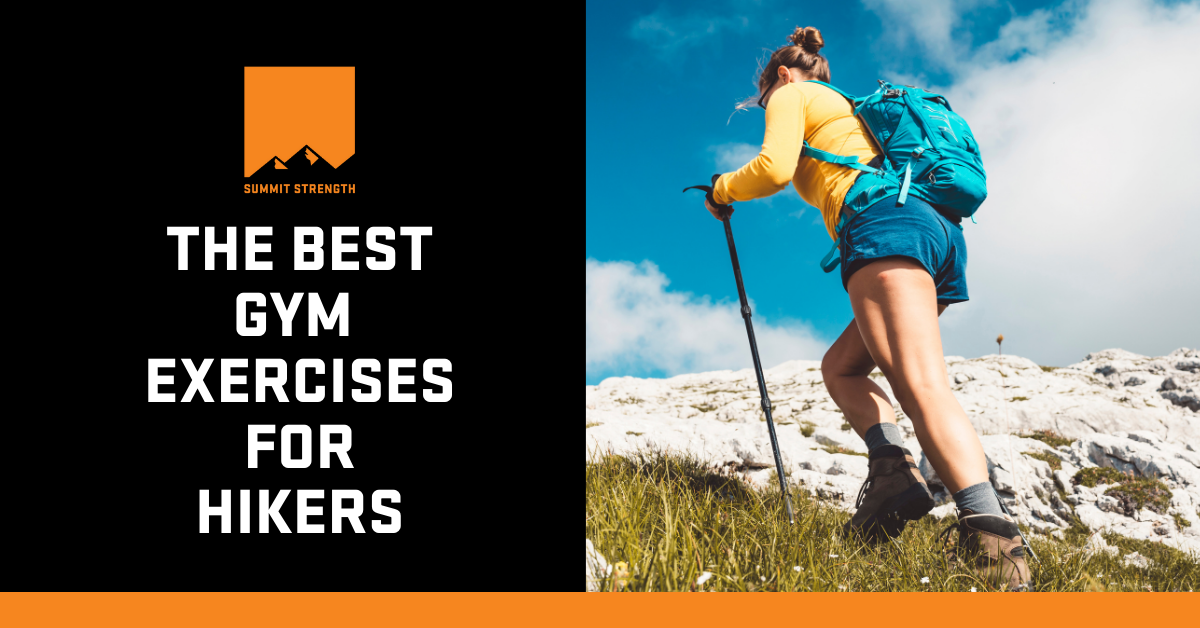
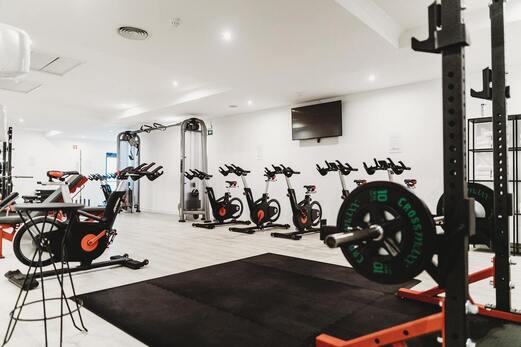
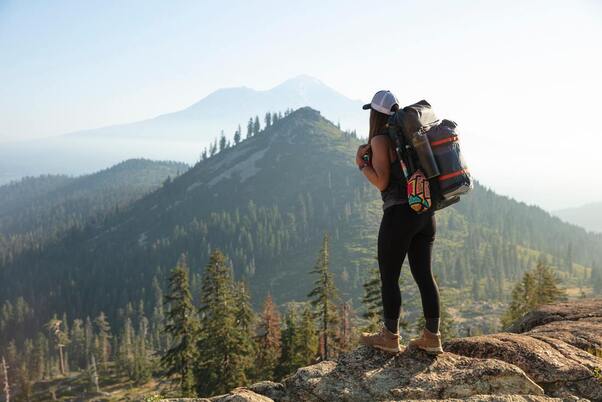
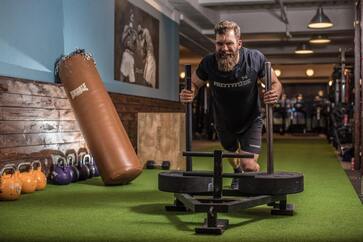
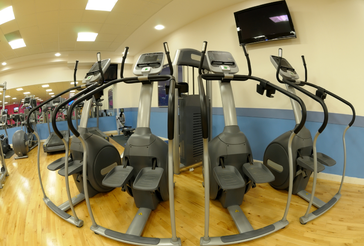
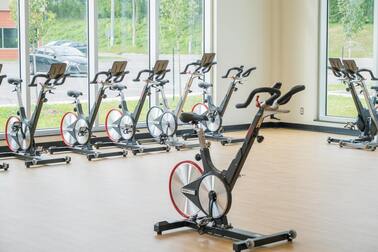
 RSS Feed
RSS Feed
